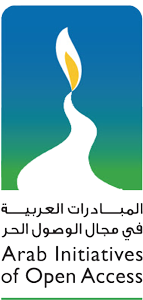Publisher pushback puts open access in peril
Delegates at the The Higher Education Technology Agenda (
THETA) conference on the Gold Coast last week heard from futurist
Bryan Alexander about four possible scenarios for the future of knowledge.
Three of them sounded engaging: there was one where “open information architecture has triumphed”; another where automation is the primary driving force; and a third which is a renaissance of “digitally enabled creativity”.
However, one was chilling. This was where the drive for “
open” has failed, and content is locked up in walled gardens.
This future is closer than many of us might care to think. Today the
Confederation of Open Access Repositories – an international association of open access (OA) repositories –
sounded an alarm that policies are being enacted which, if unchallenged, will ensure that that the foundations for these walls are cemented into place.
Green and gold
There are currently two main approaches to open access publishing: Green and Gold.
Green OA is where the final published version of an article is only available from a journal publisher’s site, after paying a subscription or after an embargo period. However, the authors’ accepted version (after peer-review but before copyediting), or an earlier version, can be made immediately available via a repository – usually at an author’s
institution or via a subject repository such as
arXiv.
Green OA is the primary way that OA is supported in Australia. This is unlike the UK, for example, which has chosen to support OA via
Gold Open Access.
Gold OA is where the journal publisher typically charges the author (or their institution) an “article processing charge” (APC), and it then makes the article freely available to read and reuse via the journal’s website. This is the model used by all journals published by the
Public Library of Science.
Gold OA content is both free to read and, because of the license, usually available for wide reuse. Although sometimes there is a compromise, known as Hybrid OA, where some articles in a journal are Gold OA, but publishers also charge a subscription for the non-OA content.
Reversal of rights
This issue raised by COAR has been brought to the fore by a
new policy announced by the giant publisher Elsevier relating to embargo periods for articles that can be shared via a “Green OA” policy.
Elsevier’s new policy is a substantial tightening of its rules around Green OA. It states that, if no APC is paid, the author’s accepted version of the article cannot be made publicly available via their institution’s repository until after an embargo period, which ranges from six months to four years.
In addition, the license required is the most restrictive possible, in that it prohibits commercial reuse, or use of excerpts of the work. For example, an author’s colleague would not be able to use a figure from a manuscript in teaching without specific permission. The fully typeset version of the article is available only from the publisher’s site after paying a subscription.
Despite Elsevier
heralding the policy as “unleashing the power of academic sharing”, it is really a reversal of the rights of authors with their own manuscripts.
Previously, Elsevier and other publishers had allowed authors to place these accepted versions into repositories with no restrictions on sharing. It’s also worth noting that Elsevier derives immediate income from subscriptions to the final published articles, although there is
no evidence that deposition of the accepted version into repositories decreases that income.
Then, in 2012, Elsevier announced that if an institution had a policy on open access, then authors could not share their articles unless the institution had entered into a specific arrangement with Elsevier. This was a policy that was considered so manifestly absurd, not to mention confusing, that it was widely ignored.
Undermining the walls
This is, at its heart, another skirmish in the long running saga of who owns what, and who has rights in scholarly publishing. And, for the publishers, how they derive income from it.
The issue of income has been brought into sharp focus recently by information released by the two biggest funders of OA in the UK, the
Wellcome Trust and the
UK Research Councils.
In addition, analysis of what organisations in the UK are paying for OA found that in 2013, 20 UK institutions spent
£3,312,679 on APCs for hybrid articles, which was on top of the £29,392,142 they had to pay for subscription access to the same journals.
In addition, the vast bulk of APCs – £1,861,757 in the case of Wellcome – are not going to newer publishers who are trying to make a sustainable business out of OA publishing, but to traditional publishers such as Elsevier and Wiley. The majority of money paid to them, including the
highest APCs, was going to support hybrid OA.
This debate affects everyone, not just publishers, funders and librarians. Academic research is one of the most valuable global public goods that exists, and its value only multiplies with access and reuse, most of which can’t be predicted or planned.
Building walled gardens or segmented siloes of content only restricts that public good. Nowhere is this shown more starkly than the announcement that, following the Nepal Earthquake, the US National Library of Medicine was activating its
Emergency Access Initiative, to provide “temporary free access to full text articles from major biomedicine titles” but there are restrictions on use of content, and it only runs until June 13, 2015.
Is that the future we really want? Where access to information, based largely on research that was publicly funded, has to be doled out as charity? If not, then we should take heed of COAR’s statement.










